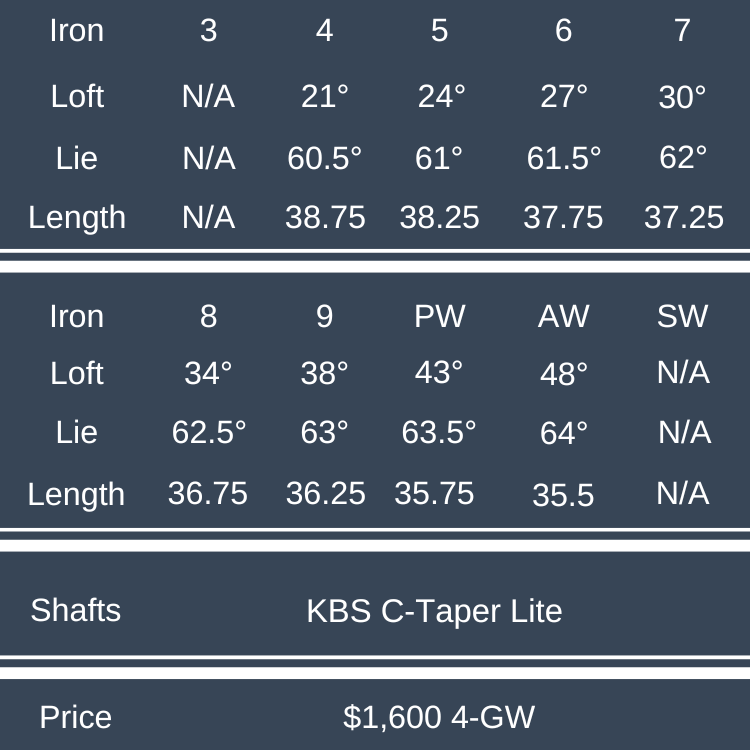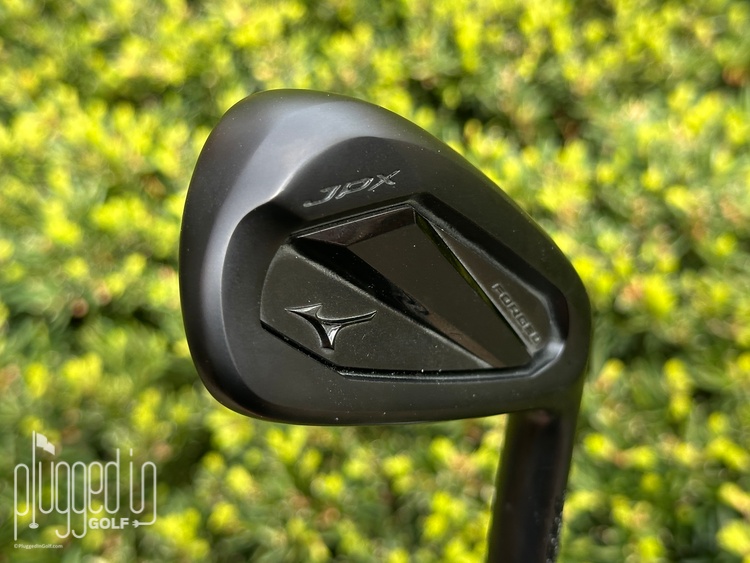50 Words or Less
The Mizuno JPX925 Forged irons give players extra ball speed and forgiveness in the long irons and more control in the short irons. Noticeable sound and feel differences between the two halves of the set. Traditional players look at address.
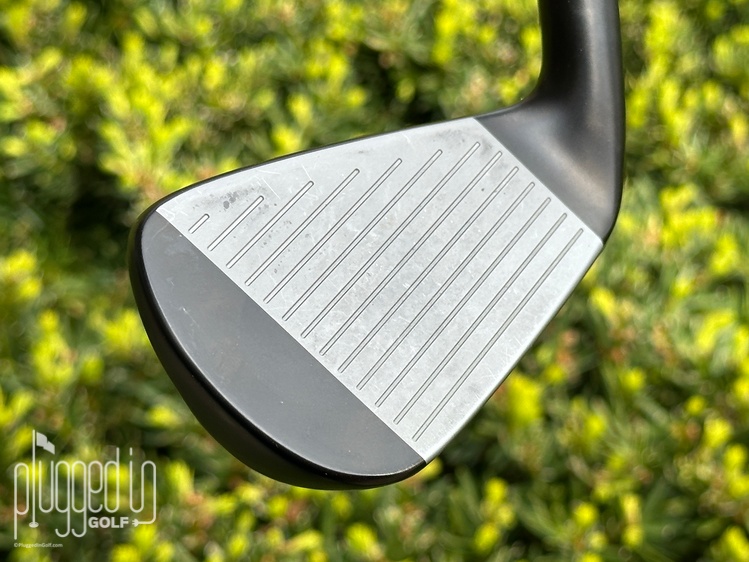
Introduction
This past fall, Mizuno released the first three members of the JPX925 iron family – the Hot Metal, Hot Metal Pro, and Hot Metal HL. More skilled players needed to wait until 2025 for the Mizuno JPX925 Forged irons, a model that’s become a favorite for the way that it blends long iron forgiveness with short iron control. I tested this latest version to see if it’s worthy of its premium price tag.
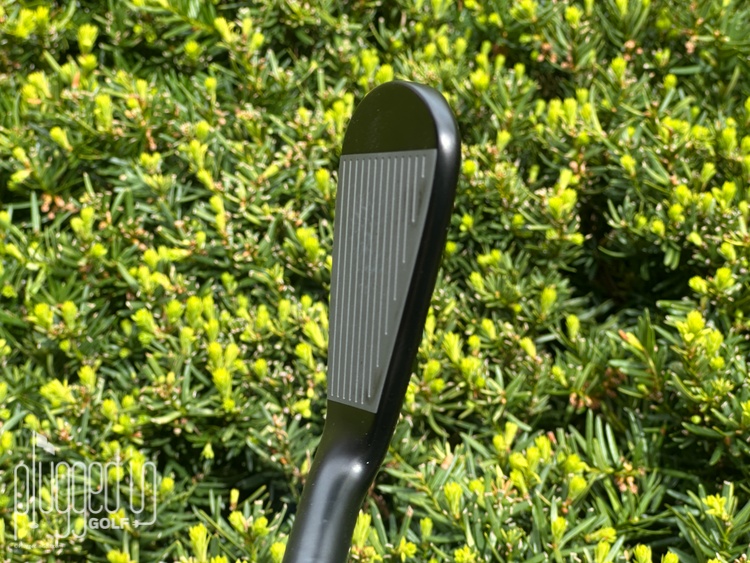
Looks
With no new Tour model, the Mizuno JPX925 Forged irons is the smallest, slimmest of the JPX925 family and just a hair bigger than the Mizuno Pro 245 [review HERE]. Looking at offset and head length, the Forged is only slightly smaller than the JPX925 Hot Metal Pro [review HERE]. There is a larger difference in the top line and sole widths. Overall, the JPX925 Forged irons are traditionally proportioned players irons. They aren’t as compact as a blade, but they’ll fit the eye of most better players.
In the bag, the JPX925 Forged has the same diagonal bar across the cavity that’s seen on the other JPX925 irons. It’s a slightly cleaner look thanks to the lack of color. I’m not a fan of the look of the other JPX925 irons, but I think the JPX925 Forged is a slight upgrade over the JPX923 Forged.
The Mizuno JPX925 Forged irons are offered in both a white satin brush finish and the black finish shown here.
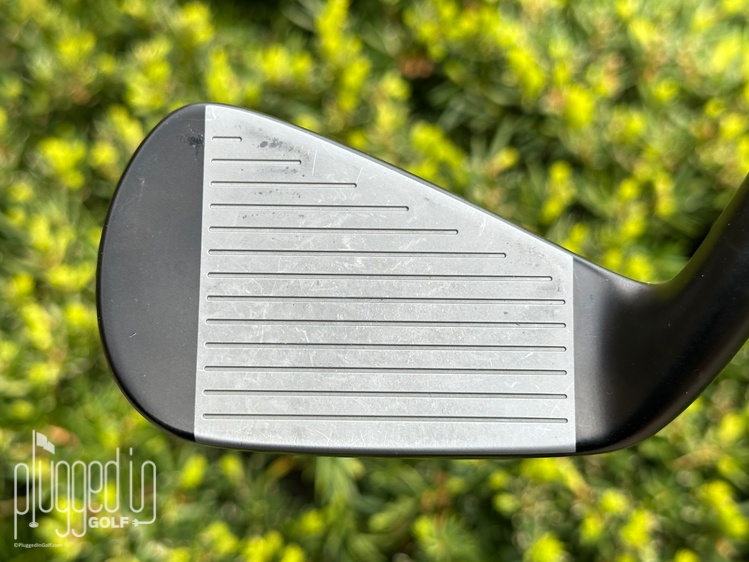
Sound & Feel
Like its predecessor, the JPX923 Forged [review HERE], the Mizuno JPX925 Forged irons are a ready-made combo set. The 4-7 irons feature multi-material construction with a Chromoly face. The 8I-GW are forged from 1025E Pure Select Mild Carbon Steel. Unlike its predecessor, I found that there was an obvious difference in sound and feel between the two halves.
In the long irons, I found the sound very snappy and above average in volume. This sound pairs naturally with the crisp, fast feel off the face. The feedback is good enough to tell a miss from a pure strike, but it’s not precise. None of this is classic Mizuno forged feel, but it’s fine.
The short irons, in contrast, get closer to that vaunted “nothing feels like a Mizuno” sensation. The impact sound is quieter and more “thud” than “snap.” Your hands get a medium-soft feel that’s more controlled than speedy, and the feedback is clearer.
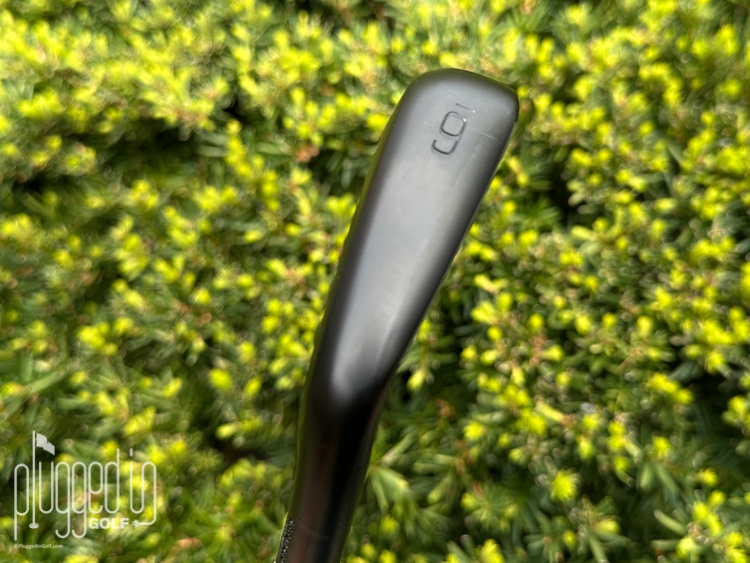
Performance
Looking over the specs, the Mizuno JPX925 Forged irons are nearly a carbon copy of the JPX923 Forged. The JPX925 is 1/4″ longer, though I believe this is not a change in the clubs’ lengths but just a change in how the clubs are measured (we have seen this with other OEMs this year). Mizuno has strengthened the lofts in the 9I, PW, and GW by one degree. These medium-strong lofts place the JPX925 Forged irons as a bridge between the JPX925 Hot Metal [review HERE] and Mizuno’s Pro irons – a place where many golfers find themselves.
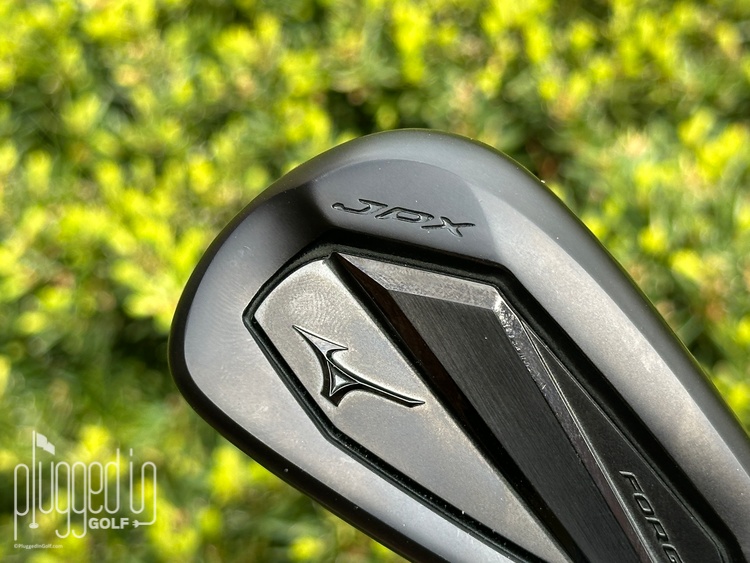
Throughout the set, these irons delivered excellent ball speed on center. Good shots all registered smash factors in excess of 1.4. Ball speed consistency was good for an iron of this size. You won’t lose all your speed from a small mishit, but large misses are going to end up short of the green.
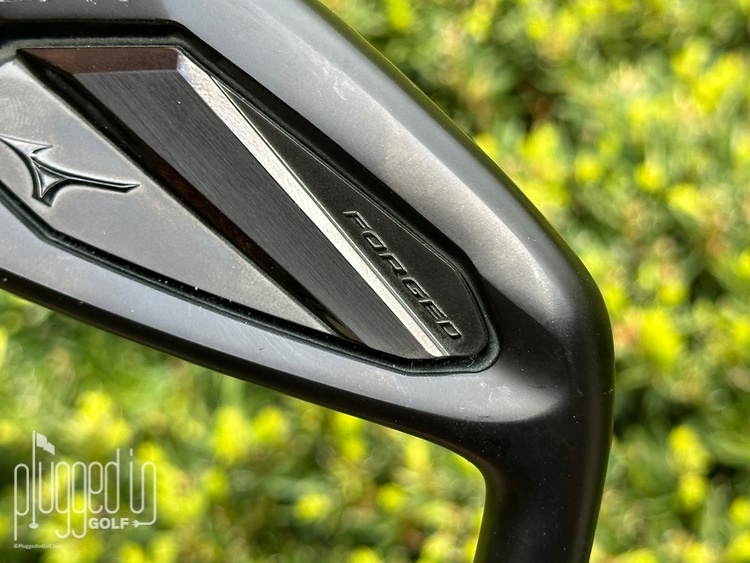
Turning to launch and spin, the Mizuno JPX925 Forged irons are both on the low side of average, as I would expect for an iron with stronger lofts. This makes them appealing from a distance perspective and for players with excessively high launch or spin. However, that appeal is limited for players more concerned with landing the ball softly on the green. As a player with slightly lower launch and spin, I needed a premium strike to produce a shot that would stick to the putting surface.
Finally, with regard to shaping shots and trajectory control, I found a significant gap between the short and long Mizuno JPX925 Forged irons. With the scoring irons, I felt like I had fairly precise control over the ball and the ability to get the ball in the air, even on a partial shot. With the long irons, the snappy feeling off the face made me feel that I was never in command of the ball, and elevating the ball took a substantial effort. While the JPX925 Forged irons aim to be “best of both worlds” for the mid-handicap player, I found the set as a whole to be a little clumsy without offering point-and-shoot ease of use.

Conclusion
For the player focused on getting a lot of distance out of a smaller, thinner club, the Mizuno JPX925 Forged irons will have a lot of appeal. For their size, they offer respectable forgiveness and plenty of ball speed. Personally, I found the gap between the short and long irons a bit too obvious, but your mileage may vary.
Support Plugged In Golf, Shop HERE
Mizuno JPX925 Forged Irons Price & Specs
